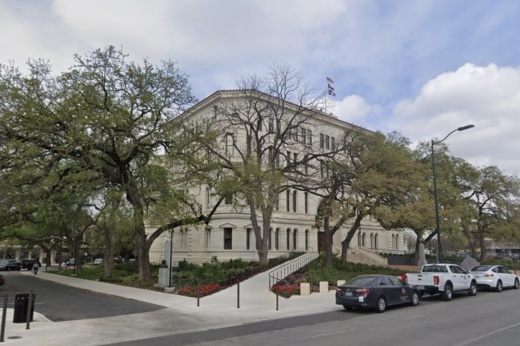San Antonio City Council voted Sept. 15 to approve a total $3.4 billion budget for fiscal year 2022-23 that features $1.5 billion in general, daily operational funding, $95 million in property tax relief and $50 million in credits for CPS Energy customers.
Local officials said the city is, for the most part, recovering from many of the financial effects of the COVID-19 pandemic.
“The budget is balanced and will enhance the services our residents expect, while also giving money back to them through direct property tax relief and energy credits,” City Manager Erik Walsh said.
The budget reflects the city’s recent expansion of property tax exemptions, including growing the over-age-65 exemption from $65,000 to $85,000, and the disabled person exemption from $12,500 to $85,000. Additionally, the city is lowering its property tax rate from $0.558 per $100 valuation to $0.541 per $100 valuation.
The new budget also reflects the city’s plan to disburse $50 million of $75 million in available surplus CPS Energy revenue, including $42.5 million as direct credits to CPS Energy customers in their November or December bills.
The city will allocate $7.5 million to the Residential Energy Assistance Partnership program; of that, $5.5 million will be used for immediate aid to eligible customers receiving a credit up to $300, not to exceed their total past-due balance.
Customers may opt out and redirect their credit to REAP to assist low-income customers or weatherization, to include minor repairs, city officials said.
“This budget sustains a vast array of city services while providing the most fiscal relief for residents in recent history, including a property tax rate reduction and expanded property exemptions for homeowners,” Mayor Ron Nirenberg said.
Council members were still divided over what to do with the CPS Energy windfall, with some expressing satisfaction with the approved city plan and others wanting to table action for more discussion and public input.
Some council members, such as District 1’s Mario Bravo, District 5’s Teri Castillo and District 2’s Jalen McKee-Rodriguez, advocated increasing the amount of available CPS Energy surplus revenue for such things as growing the city’s tree canopy to reduce urban heat island effects and to help low-income homeowners to weatherize their houses.
A proposal to delay using the windfall failed to gain a council majority, resulting in the city sticking with the eventual approved plan.
Some residents, such as Betty Eckert, said it would be beneficial to return all of the surplus revenues to utility ratepayers, especially those who are facing personal financial challenges.
“I’m of the opinion we should give the money back. It doesn’t belong to you or the city, but it belongs to the people,” Eckert told the council.
Elsewhere, the new budget raises the entry wage to $17.50 hourly, provides a 5% across-the-board increase for all civilian employees and a minimum 2% market rate adjustment, with certain jobs receiving higher adjustments.
Additionally, uniformed police and fire employees will see wage increases consistent with their respective collective bargaining agreements, local officials said.
The budget also adds 78 new uniformed police positions and 21 new fire department positions; $116 million for street maintenance; $21 million for sidewalk fixes; $700,000 to aid small businesses in various ways; and reserves $2 million to potentially expand the city’s SACore mental health response team.
Additionally, the FY 2022-23 budget includes funds for initial projects supported by the voter-approved 2022 bond, including $136 million for new affordable housing construction as well as preservation and improvement of existing affordable housing.
District 10 Council Member Clayton Perry voiced disappointment that not all the $75 million in CPS Energy surplus revenue was being return to customers, but on the whole, he said he was generally happy about increased funding for what he called basic, critical daily city operations.
“All these core priorities are exactly where we should be spending our funds, and we should continue our investment in basic core services. Going forward, I’d like to see us renew our focus on a back-to-basics budget and hope the council will see more metrics from each department to show the public how their funds are being used and what is their return on investment,” Perry said.
District 6 Council Member Melissa Cabello Havrda said, as the community recovers from the height of the pandemic, the city’s mindset is pivoting from project-based thinking and proposals toward a more systems-based approach to services and problem solving.
“The council cannot forget its basic charge. There is a commitment to continue improving our streets, sidewalks and drainage. This budget prioritizes important community staples, like police and firefighters, libraries and parks, animal care, lighting, public health, and transportation,” Cabello Havrda said.
McKee-Rodriguez said he was glad to see San Antonio’s new budget include the creation of a position to address crime and recidivism prevention, an additional staff member to better help constituents and their needs, and the establishment of a fund for small businesses impacted by city-initiated construction.
“A key focus of our office is to ensure that five years from now, our constituents will not have the same concerns they’ve had for the past five, 10 or 15 years,” McKee-Rodriguez said.





